In this exercise we were given a whisk. The goal was to run it through the SCAMPER method and find a completely different use for it than its originally intended purpose. We were also asked to work with one of our classmates and I had the pleasure to work with Ramina Høyvik.
Substitute – If the original product is a stainless steel whisk, one idea would be to change out the handle and make it non-slippery and/or change out the head to a more flexible material. I also like the idea of substituting stainless steel with copper.
Combine – I believe Ramina’s idea of adding a little battery operated motor to a sauce whisk was great . This way it could also be used as a hand-held milk frother. Her initial sketch and detailed work on the idea is below.
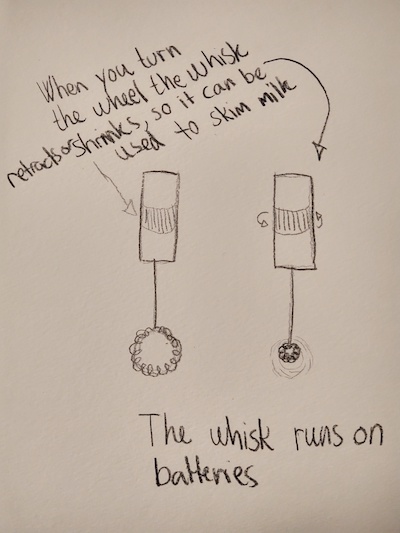 |  | 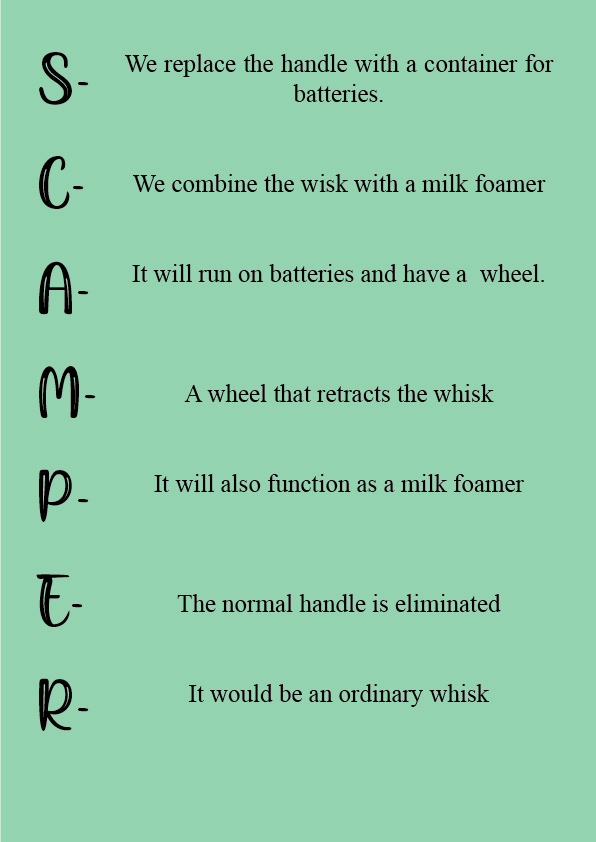 |
Adapt – The whisk could have just one handle with replaceable heads for different whisk types. Also, by adding a machine and a bowl, we could automate the process.
Modify – The shape of the whisk or handle could be modified for different uses. For example by making the handle longer and thinner, it could be used in bigger pots to help smooth out creamy soups. Also, changing the color of the whisk could create a very different look.
Put to another use – I thought the whisk could be used as a frame for a lamp. This could be a fun feature in a kitchen or cake shop, but it could also become a trend and be used just about anywhere.
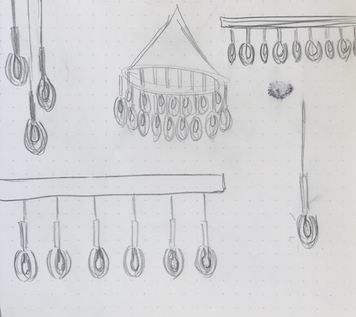
Eliminate – If we are working with a regular whisk, half of the whisk could be eliminated to make it flat, this would help cover more surface area on the bottom of a pan, making it ideal for blending sauces. Also, building on the idea of a whisk lamp, the handle could be removed for a different look.
Reverse – I had a hard time trying to think of a way to reverse a regular whisk, but perhaps the head of the whisk could be reversed for different effect.
Because the purpose was to find another use for the product, we decided to go with the “whisk lamp” idea. Below you will see my illustration and the slogan for the product: “Let’s shake it up!” This communicates the idea that the whisk lamp is an unconventional idea so it is ‘shaking things up a bit’. It also refers to the original purpose of the product, which is to “shake”/whisk things up.
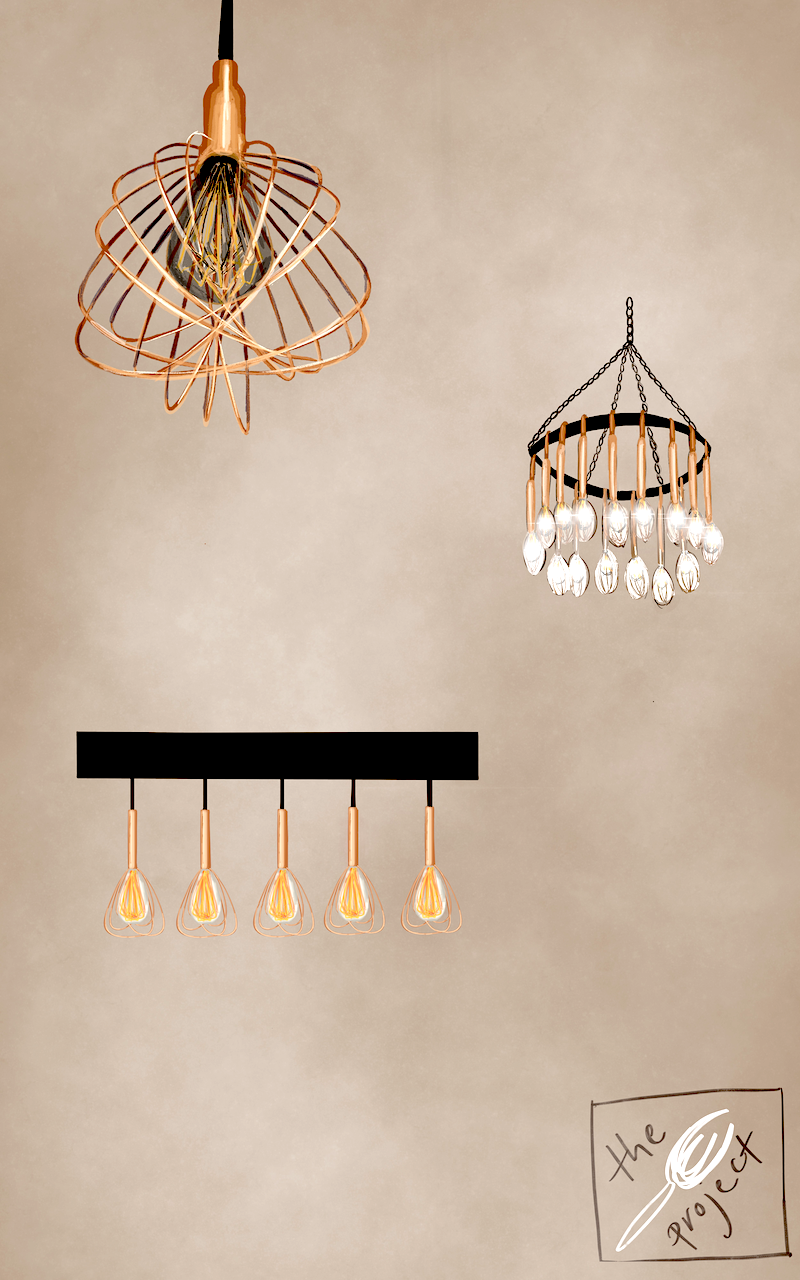 | 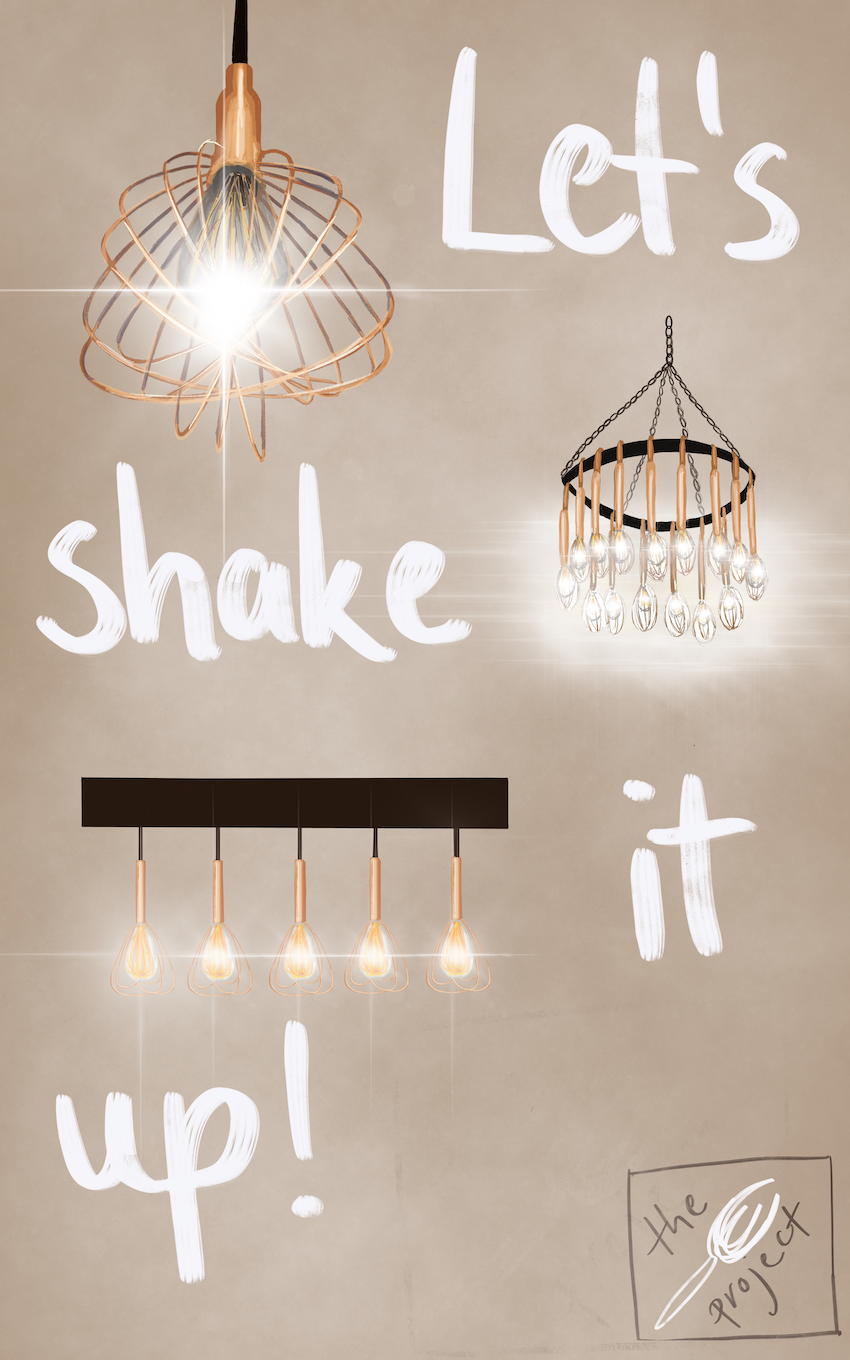 |
My understanding of the assignment was to apply the scamper method as usual to a regular whisk in order to eventually land on a new use for the object, but Ramina had a different interpretation. Because I was not sure which one was correct, I decided to also show how each scamper method would apply to this new product.
S – The original material was changed to copper.
C – The whisk was combined with a light bulb.
A – We adapted to cultural trends, which call for unique, unconventional, and interesting ideas.
M – The size of the whisk was modified on some models, making it larger as well as wider on the bottom
P – We put it to another use by using it as a lamp. This was achieved by running a wire through the handle and building a lamp inside the whisk.
E – The handle could be shortened or eliminated entirely on some models to give the lamp a different look.
R – The head of the whisk could be reversed for a different look. Another idea would be to reverse the whole object, making the handle into an embellishment on the bottom /or add the lamp inside the handle instead and make the “whisk” part an embellishment on top.


No responses yet